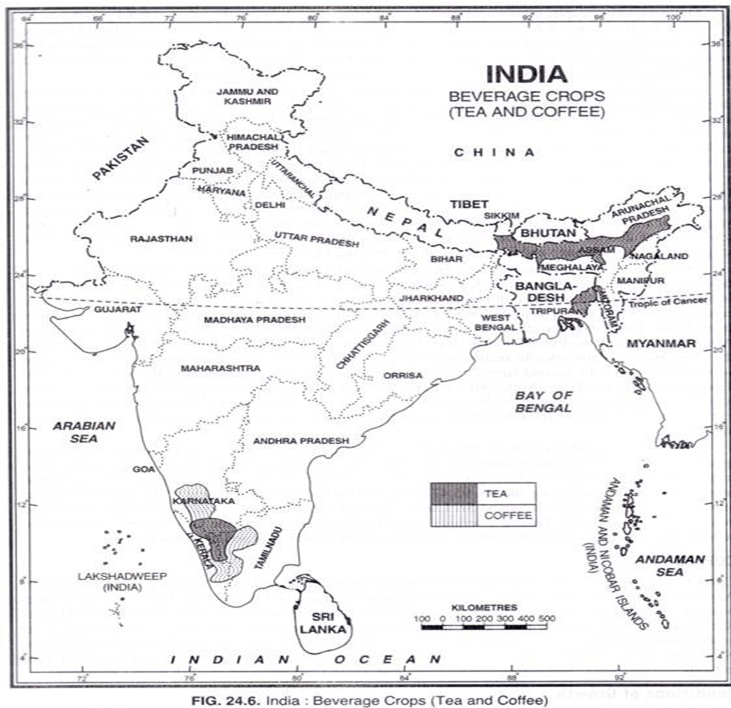Governance
In News: On the side lines of the annual conference of United Planters Association of Southern India, The Coffee Board is coming out with a sustainability code for Indian coffee.
About Coffee Board:
- The Government of India established the ‘Coffee Board’ through a constitutional act “Coffee Act VII of 1942”
- Until 1995 the Coffee Board marketed the coffee of a pooled supply. Later, coffee marketing became a private-sector activity due to the economic liberalisation in India.
- It is under the administrative control of Ministry of Commerce and Industry.
- The Board comprises 33 members including the Chairman, who is the Chief Executive and appointed by the Government of India.
- Role of Coffee Board: Coffee Board serves as the friend, philosopher and guide to the Coffee sector covering the entire value chain. The core activities are primarily directed towards research & development, transfer of technology, enhancement of production, quality improvement, export promotion and supporting development of Domestic market.
- The head office of the Coffee Board is situated in Bangalore.
- International Coffee Day is on 1st October.
About coffee and its cultivation:
- It is indigenous to Abyssinia Plateau (Ethiopia) from where it was taken to Arabia in 11th century. From Arabia, its seeds were brought to India by Baba Badan Giri in the 17th Century and were raised in the Baba Budan Hills of Karnataka.
- Climatic conditions
- hot and humid climate with temperature varying between 15°C and 28 °C
- Heavy rainfall from 150 to 250 cm.
- It does not tolerate frost, snowfall, high temperature above 30°C and strong sun shine and is generally grown under shady trees
- Dry weather is necessary at the time of ripening of the berries
- Stagnant water is harmful
- Grown on hill slopes at elevations from 600 to 1,600 metres above sea level
- Well drained, rich friable loams containing good deal of humus and minerals like iron and calcium are ideal for coffee cultivation
- In India, coffee is traditionally grown in the Western Ghats spread over Karnataka, Kerala, and Tamil Nadu. Coffee cultivation is also being expanding rapidly in the non-traditional areas of Andhra Pradesh and Odisha as well as in the North East states.
Types of Coffees in India
- The two main varieties of coffee viz., Arabica and Robusta are grown in India. Arabica is mild coffee, but the beans being more aromatic, it has higher market value compared to Robusta beans. On the other hand, Robusta has more strength and is, therefore, used in making various blends.
- Arabica is grown in higher altitudes than Robusta.
- Arabica is susceptible to pests & diseases such as White Stem Borer, leaf rust, and requires more shade than Robusta.
- The harvest of Arabica takes place between November to January, while for Robusta it is December to February.

Source: The Hindu
Previous Year Question
Q.1) Consider the following States: (2022)
- Andhra Pradesh
- Kerala
- Himachal Pradesh
- Tripura
How many of the above are generally known as tea-producing States?
- Only one State
- Only two States
- Only three States
- All four States














